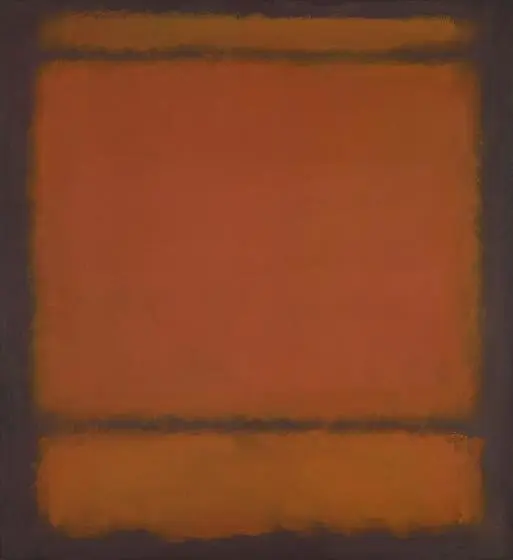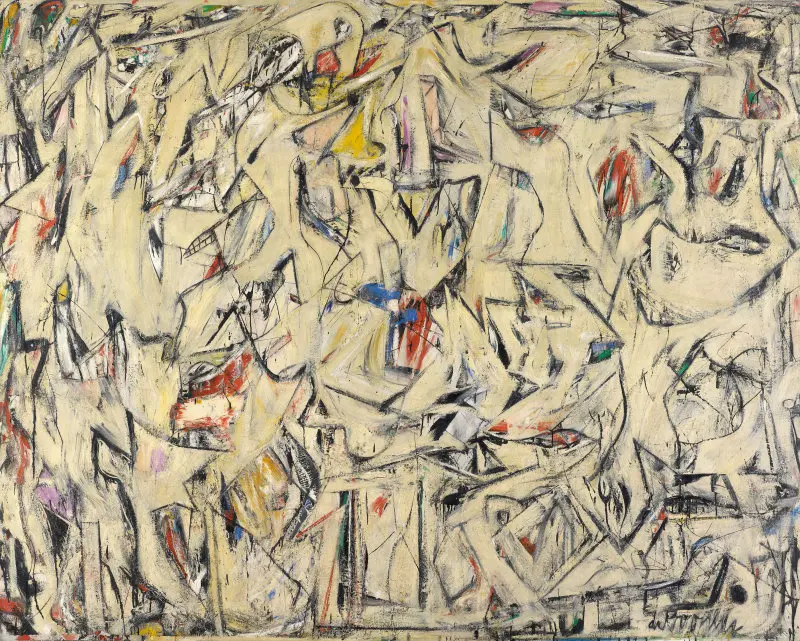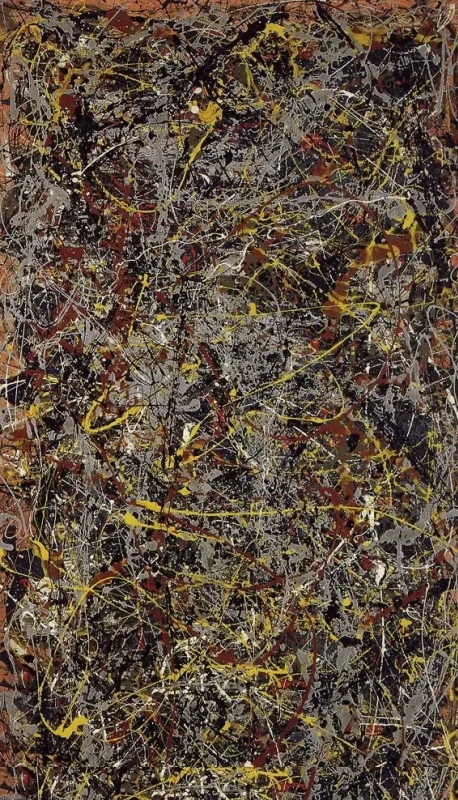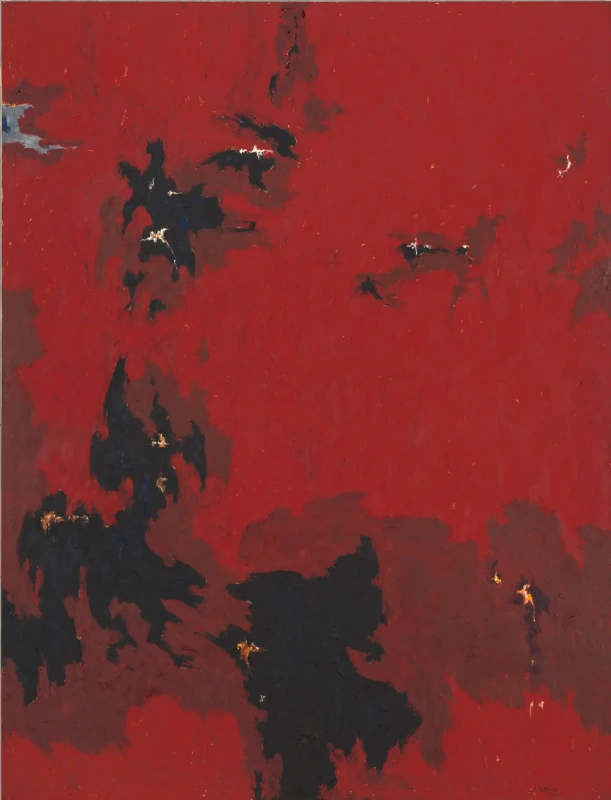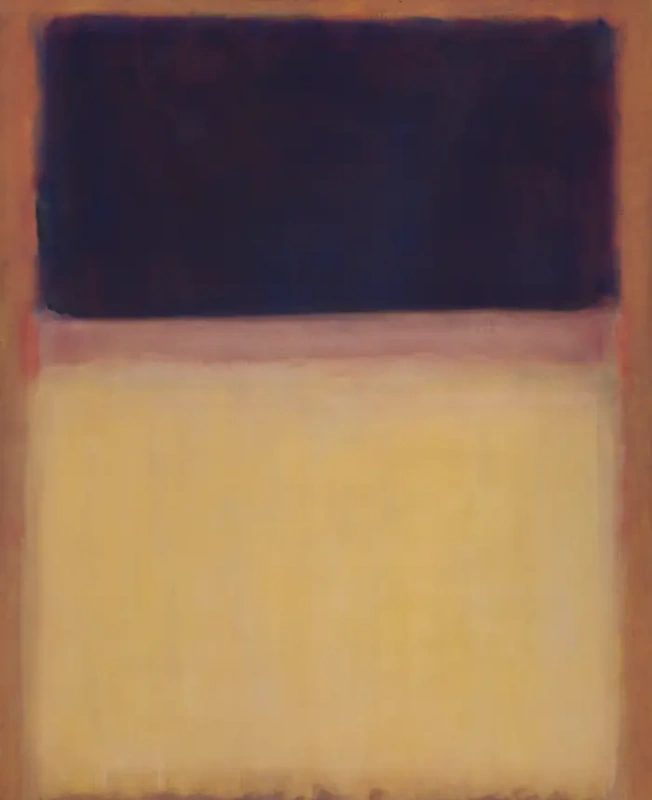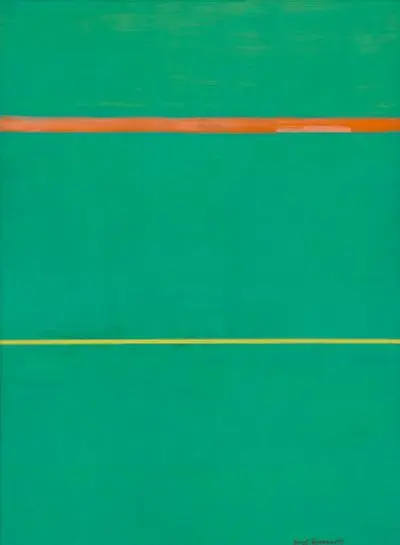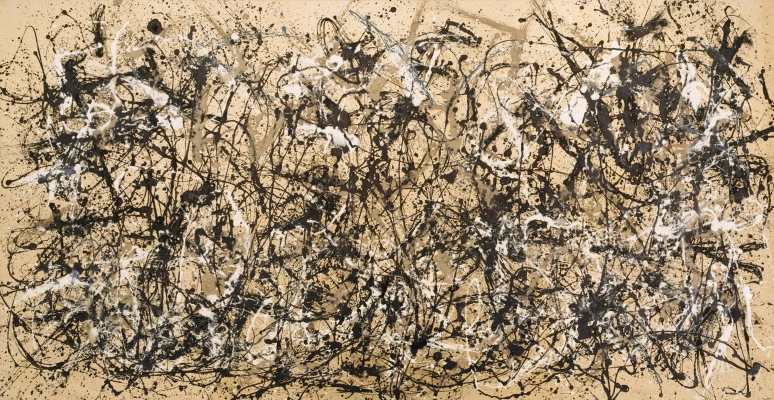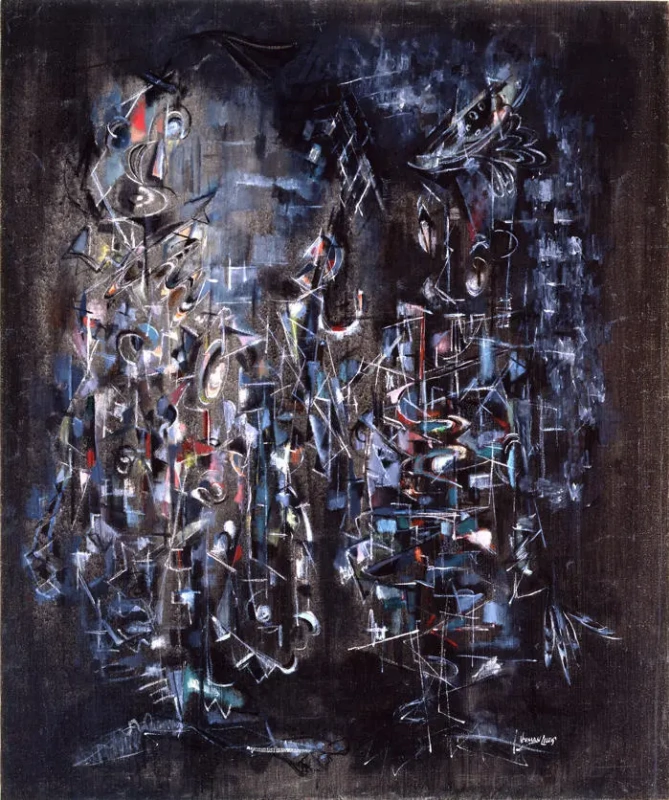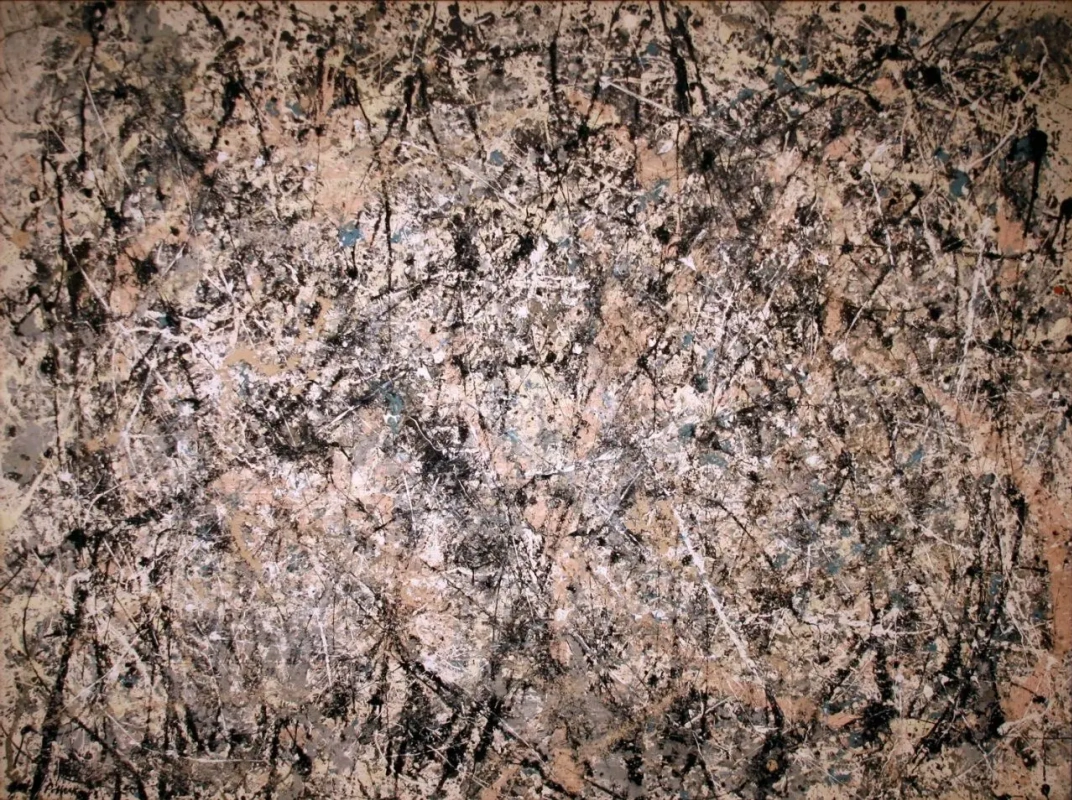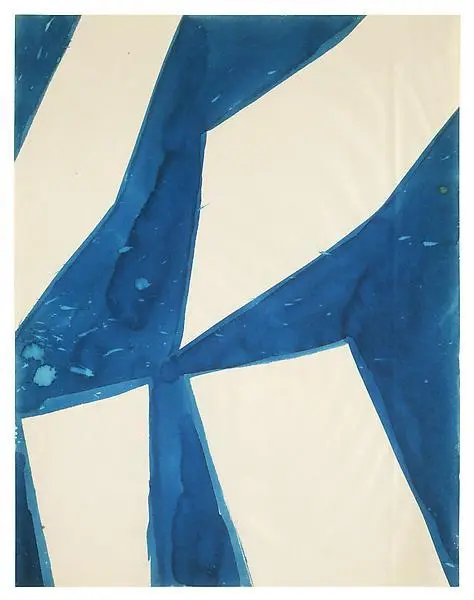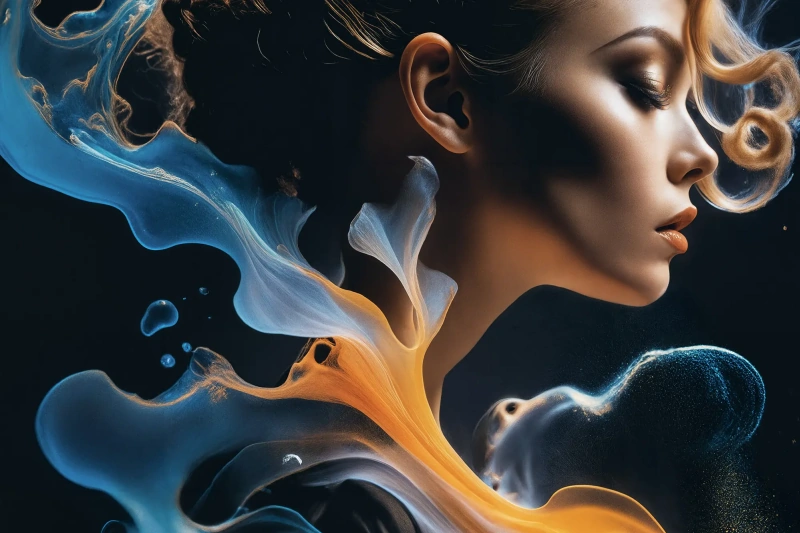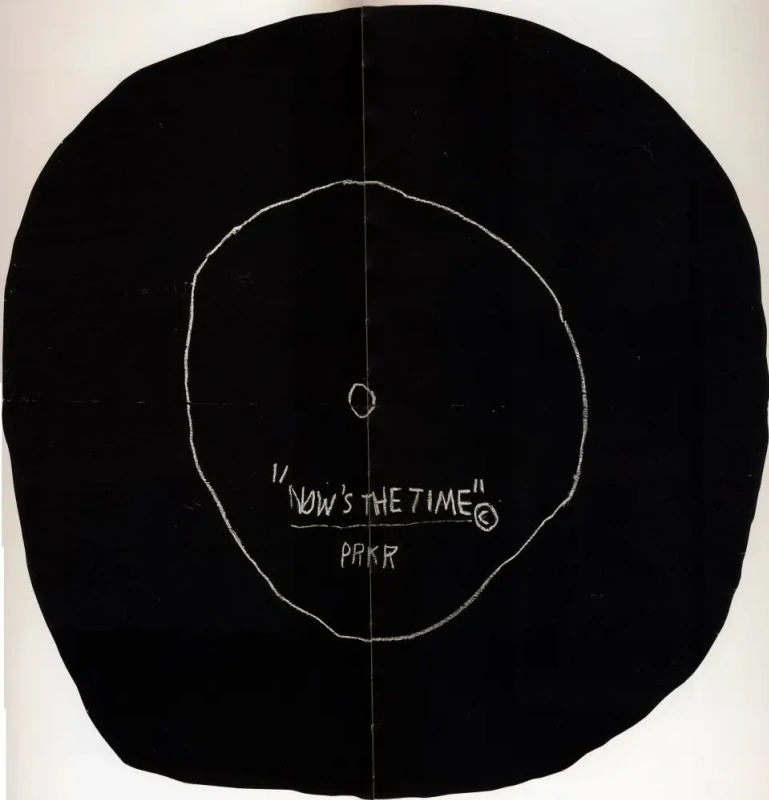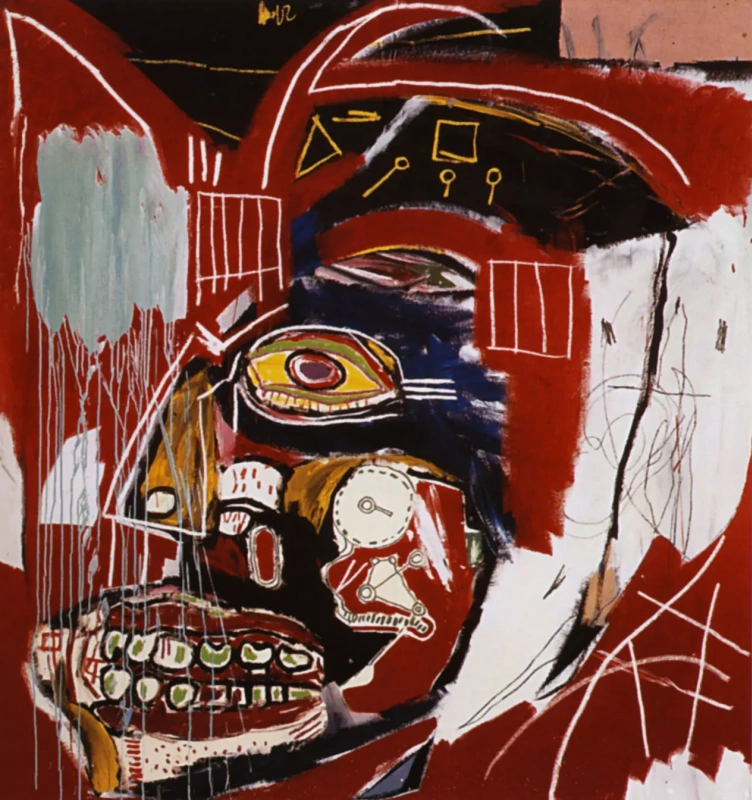Abstract expressionism
is a large-scale movement in 20th-century American painting that originated in the late 1940s and became the dominant trend in Western art of the 50s. The most prominent representatives of abstract expressionism
were Jackson Pollock, Willem de Kooning, Franz Kline and Mark Rothko. Most abstract expressionists lived, worked, and exhibited in New York.

Time to get a sense of the term
By and large, the concept of "abstract expressionism" is not very accurate definition for the works attributed to it. In fact, this movement includes many different styles, each of which had only one or several artist representatives, and different techniques. However, despite the breadth of the concept, paintings of the style of abstract expressionism have some common features. Firstly, in fact, they are all abstract, that is, they do not reproduce the visible world. They are a reflection of free, spontaneous and personal emotional experience and are distinguished by freedom in the performance technique. When creating these works, particular attention was paid to the variable physical properties of the paint in order to emphasize the depicted experience. These paintings are made in the form of a kind of mental improvisation with an emphasis on the intuitive use of materials, akin to the automatism of the surrealists; they were created in order to express the power of the creative unconscious. Another feature that distinguishes the works by abstract expressionists is the rejection of a conditionally structured composition built of individual elements, and their replacement with a single, undifferentiated field. And finally, these paintings are normally huge.Key points
1. Most artists who are attributed to abstract expressionism reached their creative maturity in the 1930s. They were significantly influenced by the era of "left" politics, and their main value in art was the expression of their personal experience. Some of them abandoned their previous radical political views at different times, but many of them continued to hold on to the image of principled avant-garde protesters on the side of the road.2. Abstract expressionists developed their own artistic style at the time when Americans suffered from economic problems and felt like provincials isolated from the world of art. Therefore, the movement of abstract expressionists joyfully proclaimed the first native American avant-garde movement. Their art was persistently called emphatically American in spirit — monumental in scale, romantic in mood and expressing difficult aspects of personal freedom.
3. Only artists are considered to belong to the abstract expressionism , however, it attracted creative people from various fields. For example, sculptors (David Smith) and photographers (Aaron Siskind) revolved in the "orbit" of this artistic movement.
4. The unstable political situation in Europe of the 30s led many leading surrealist artists, who had a significant impact on abstract expressionists through their style and focus on the unconscious, to the United States (mostly New York). Surrealists aroused interest in abstract expressionists in myths and archetypes, as well as they helped shape their attitude to painting as a whole, as to the struggle between self-expression and the chaos of the unconscious.
The Beginning: Art born by the Depression
The predecessors of abstract expressionists include two notable figures: Arshile Gorky, who created suggestive biomorphic forms with thin lines and used liquid paint in his work, and Hans Hoffmann, whose works are distinguished by dynamic and textural strokes, while traditional composition at the same time.As already mentioned, many of the abstract expressionists grew out of the first artistic experiments in the 1930s. The Great Depression spawned two popular art movements — regionalism and social realism . None of these trends suited this new generation of artists, who focused on the search for rich content and deep meaning, on painting devoid of provincialism and frank political colouring. However, the Great Depression also had one advantage, so to speak. At this time, the US government created several powerful government programs to provide unemployed Americans with jobs, which allowed many aspiring artists to start a successful career.
Be that as it may, many artists who experienced the horrors of the Great Depression, at the beginning of their career, were forced to turn to regionalism and social realism . Most of them subsequently abandoned these styles, but were able to learn a lot from them for further work. In particular, as from these first works the abstract expressionists believed that art should be based primarily on personal experience. Work on murals inspired them to create monumental abstract paintings in the future. And working together for the US government helped this motley audience stick together when a new art movement began to emerge.
In order to give life to this movement, many factors have developed. In 1947, Jackson Pollock invented the "drip" technique. The following year, an important exhibition of works by Willem de Kooning took place at the Charles Egan Gallery. Barnett Newman created his breakthrough canvas "The Unity, 1", and Mark Rothko began to paint his "multiform" paintings, the forerunners of his most popular works of his mature period. After one and a half dozen artists staged a boycott of the contemporary art exhibition at the Metropolitan Museum of Art, they were captured in a group photo for Life magazine and dubbed "The Irascibles". This way the abstract expressionism got something like a common goal and idea.

"The Irascibles": Theodoros Stamos, Jimmy Ernst, Barnett Newman, James Brooks, Mark Rothko, Richard Pousette-Dart, William Baziotes, Jackson Pollock, Clyfford Still, Robert Motherwell, Bradley Walker Tomlin, Willem de Kooning, Adolf Gottlieb, Ad Reinhardt, and Edda Stern.
A major advantage for the first abstract expressionists was that most of them lived and worked in New York, which at that time was famous for its huge network of museums and galleries, regularly holding exhibitions of even the most daring and controversial artists. The Museum of Modern Art demonstrated the expositions "Cubism and Abstract Art", "Fantastic Art, Dada, Surrealism" and a large-scale retrospective of the oeuvre of Picasso. And in 1939, the Museum of Abstract Painting (now — Solomon R. Guggenheim Museum) opened in New York, famous for its impressive collection of works by Wassily Kandinsky.
According to many critics and art historians, it was abstract expressionism
that caused New York to eventually become the centre of the world of Western art. The lives of artists of this movement mostly centred around Lower Manhattan. Walking along the 8th Street, you could go to the Waldorf cafeteria, where drab artists were seasoned with "tomato soup" made of free hot water and ketchup. Further down the street, there was the Hans Hoffmann School of Fine Arts and the "Club" - a loft where lectures and hot discussions about art were held until late at night. Jackson Pollock’s studio was located on East 8th Street, Willem de Kooning and Philip Gaston settled on the East 10th, and Franz Klein was constantly plying between different houses and studios in the same area. However, quite often the artist whiled away nights with his colleagues in the famous Cedar Street Tavern eatery.
The action painting
In 1947, Jackson Pollock invented a radically new technique. Painters of the time used to apply paint on canvas with a brush, and the canvases themselves were stretched onto a stretcher and mounted on an easel. Pollock poured and dripped diluted paint (often the usual "technical" enamel) onto canvases spread on the floor directly from the can or sprayed it with the help of improvised items. His work was clearly non-figurative. They shocked the audience with their stories (more precisely, the lack thereof), their enormous size and technique.
Willem de Kooning developed his own version of the action painting: an energetic, even aggressive style, within which he alternated purely abstract works with powerful iconic figurative paintings.
For abstract expressionists, the reliability and value of their work was primarily in their directness and immediacy of expression. Each picture was supposed to serve to reveal the inner essence of the artist, and the energetic style of the action painting was the main sign of the living process of creation.
Willem de Kooning developed his own version of the action painting: an energetic, even aggressive style, within which he alternated purely abstract works with powerful iconic figurative paintings.
For abstract expressionists, the reliability and value of their work was primarily in their directness and immediacy of expression. Each picture was supposed to serve to reveal the inner essence of the artist, and the energetic style of the action painting was the main sign of the living process of creation.
The Colourfield Painting
The second most important "group" of abstract expressionists were artists who chose the so-called colourfield painting as a way of expression. The main members of this group are Mark Rothko, Barnett Newman and Clyfford Still. These artists relied on religion and mythology in their work and created simple compositions with large areas filled with the same colour, designed to evoke a contemplative, meditative mood in the viewer. According to Mark Rothko, his inside glowing colour rectangles with blurry edges were supposed to provoke almost religious experiences, even cause tears.
In the colourfield painting, as well as in the action painting, the size of the paintings played a significant role. Rothko, for example, painted on huge canvases, explaining it this way: "I draw big to be closer". One of the main ideas was to place these huge canvases in the exhibition space so that the viewer was surrounded by them from all sides and immersed as much as possible in the colour planes.
Rothko and Newman aimed to achieve the effect of "elevation, not beauty" in their works. Newman described his reductivism as one of the means of "liberating oneself from obsolete props and old-fashioned traditions… Liberating oneself from obstacles, such as memory, associations, nostalgia, legends and myths that were the means of Western European painting".
In the colourfield painting, as well as in the action painting, the size of the paintings played a significant role. Rothko, for example, painted on huge canvases, explaining it this way: "I draw big to be closer". One of the main ideas was to place these huge canvases in the exhibition space so that the viewer was surrounded by them from all sides and immersed as much as possible in the colour planes.
Rothko and Newman aimed to achieve the effect of "elevation, not beauty" in their works. Newman described his reductivism as one of the means of "liberating oneself from obsolete props and old-fashioned traditions… Liberating oneself from obstacles, such as memory, associations, nostalgia, legends and myths that were the means of Western European painting".
All that jazz
Autumn rhythm (Number 30)
1950, 266.7×525.8 cm
Many artists at different times found inspiration in music. Jazz involved improvisation and maximum energy, thus abstract expressionists, including Jackson Pollock, admitted to listening to jazz while working.
Norman Lewis worked in Harlem, a district of New York known for its artistic, musical and literary achievements, where mostly African Americans lived. Lewis often portrayed Harlem jazz clubs in his early figurative works. His later abstract works seem saturated with jazz lyrics and spontaneity. Once Willem de Kooning compared his technique with that of the famous trumpeter: "Miles Davis bends notes. He does not play them, he cambers them. And I bend my paint."
Norman Lewis worked in Harlem, a district of New York known for its artistic, musical and literary achievements, where mostly African Americans lived. Lewis often portrayed Harlem jazz clubs in his early figurative works. His later abstract works seem saturated with jazz lyrics and spontaneity. Once Willem de Kooning compared his technique with that of the famous trumpeter: "Miles Davis bends notes. He does not play them, he cambers them. And I bend my paint."
Abstract Expressionism: A crib
Significant works
Jackson Pollock Number 1 (Lavender Mist) (1950)This painting was one of 32 works by Jackson Pollock exhibited at his 1950 solo exhibition at Betty Parson Gallery in New York and was the only painting sold at this exhibition. Despite the praise of critics and the attention of the press, Pollock’s paintings made in the famous "drip" technique were not bought until the last years of his life. Pollock gave the name "Number One" to several of his works, but then he expanded these names. And although the paintings "Number 1" (1949) and "One, Number 31" (1950) are interconnected, they differ significantly in mood. The work "Number 1 (Lavender Mist)" is the brightest example of an action painting, in which paint was poured directly onto the canvas and applied with vigorous movements to reflect the artist’s inner essence. The expressive colours and the canvas space, formed of layers and drops of dense, opaque paint, create a textural picture surface, which almost makes the viewer dizzy.
Number 1 (Lavender mist)
1950, 221×299.7 cm
Mark Rothko "Red, Brown, and Black" (1958)
Most of artworks by Mark Rothko are named after the colours used in them, and all of them consist of soft solid rectangular stripes, horizontally stretched on a canvas. "Red, Brown, and Black" is a vivid example of chromatic abstraction related to the so-called colourfield painting. Artists who worked in this style paid much attention to brush strokes and paint texture, but they all finally saw colour as the most powerful communication tool. Rothko owed his passion for mysticism, religion and mythology to the surrealists, and his colour fields create a contemplative, meditative space, in which the viewer can visually examine his own mood, caused by the palette of the canvas.
Most of artworks by Mark Rothko are named after the colours used in them, and all of them consist of soft solid rectangular stripes, horizontally stretched on a canvas. "Red, Brown, and Black" is a vivid example of chromatic abstraction related to the so-called colourfield painting. Artists who worked in this style paid much attention to brush strokes and paint texture, but they all finally saw colour as the most powerful communication tool. Rothko owed his passion for mysticism, religion and mythology to the surrealists, and his colour fields create a contemplative, meditative space, in which the viewer can visually examine his own mood, caused by the palette of the canvas.
No. 16 (Red, brown and black)
1958, 270.8×297.8 cm
Willem de Kooning "The Door to the River" (1960)
Willem de Kooning was another artist attached to action painting, however his style was different from Jackson Pollock’s technique. De Kooning used broad strokes and a light, pastel palette. His work suggested the search for genuine experiences, not only within creating of the picture, but also within the canvas embodiment of the past experience. Some critics believe that de Kooning was significantly influenced by cubism, since in many of his works he relies on peculiar mesh compositions in which colour is creating multidimensionality and texture. "The Door to the River" painting became part of a painting series created in the 1950—60s, where de Kooning seemed to apply completely spontaneous strokes to reflect the kind of the physical presence of not only the artist, but also the viewer himself.
Willem de Kooning was another artist attached to action painting, however his style was different from Jackson Pollock’s technique. De Kooning used broad strokes and a light, pastel palette. His work suggested the search for genuine experiences, not only within creating of the picture, but also within the canvas embodiment of the past experience. Some critics believe that de Kooning was significantly influenced by cubism, since in many of his works he relies on peculiar mesh compositions in which colour is creating multidimensionality and texture. "The Door to the River" painting became part of a painting series created in the 1950—60s, where de Kooning seemed to apply completely spontaneous strokes to reflect the kind of the physical presence of not only the artist, but also the viewer himself.
Door to the river
1960, 203×178 cm
You are an expert if:
You realize that the greatest abstractionists grew out of the painting of the past. And they are even able to discern in Willem de Kooning’s "Excavations", for example, "the European roots of the artist, who recognized Rembrandt's dark drama, Van Gogh’s painful expressiveness and the post-war existential fear of Kirchner's German expressionism " (quotes from "Incomprehensible Art. From Monet to Banksy" by Will Gompertz; by the way, if you are not an expert yet, we recommend it).You are a layman if:
Looking at the canvases by abstract expressionists, you ask the question "What did the author want to say?" and hurry to see the catalogue to find out the name of the painting (in 90% of cases you’d have no luck) or to read what the curator and art historians say about it. Look at the picture instead and ask yourself: "What am I seeing here? What am I feeling right now? "What's next? The Transformation and the Heritage
As with any group of artists whose paintings are widely recognized by critics and the public, abstract expressionism was finally threatened with the loss of its original purpose. Artists received the support of a large-scale network of art dealers, museums and galleries, even the US government recognized their activities, contributing to its promotion abroad, and thereby showing a policy that was very different from the Stalinist repression.The further events were inevitable: abstract expressionism began to attract many young followers and to balance on the verge of transforming from spontaneous and impulsive art into hard academism .
Equally inevitable was the change in the course of abstract expressionism in the mid-1950s. The most significant works by artists of this movement were created on the basis of the conflict between chaos and control, which could be expressed in a great many ways. Some artists, such as Rothko and Newman, evolved to such a simplified style that they practically did not leave room for further development, and change of their course would not bring them the same popularity as the previous revolutionary innovations. The fresh generation of young artists, who followed the masters of abstract expressionism , quickly got tired of the principled and pretentious pose of the "elders" and were less and less inclined to transfer some high feelings or deep experience to the canvas. In addition, homosexual artists such as Jasper Jones, Andy Warhol and Ellsworth Kelly felt too far from the machos' sentiments prevailing among abstract expressionists. Artists of the new generation learned a lot from their predecessors, but, while preserving the general idea of the movement, they introduced innovations that were not approved by the "veterans": irony, ambiguity and omissions. Others, like Warhol, were passionate about street pop culture, which had too little to do with the high ambitions of hard-drinking womanizers like Pollock and de Kooning.
By the end of the 50s, abstract expressionism
had completely lost ground and almost completely disappeared from news and reviews of critics, while a new generation of artists confidently reached the peak of their success. However, at the same time, the achievements of abstract expressionists were still considered significant and important for American painting. In 1958, the artist Allan Kaprow wrote an article for the ART News magazine entitled "What is the legacy of Jackson Pollock?" One of the main abstract expressionists became the forerunner of styles in which painting is closely intertwined with performance, in particular, in the works by Japanese Gutai group artists and Viennese performance artists. However, all the artists who took their first steps in painting and developed their own vision in the following decades felt the influence of the movement, perhaps. Abstract expressionism
was reflected in the works by Dorothea Rockburn, Pat Steir, Susan Rotenberg and Jack Witten in the 70s. And, without a doubt, it influenced neo-expressionists of the 80s, such as Julian Schnabel and Jean-Michel Basquiat. Over time, the themes and concepts of abstract expressionism
may have lost their influence on young artists, but at the same time they laid sort of a foundation of modern American art and created certain quality standards of artworks.






